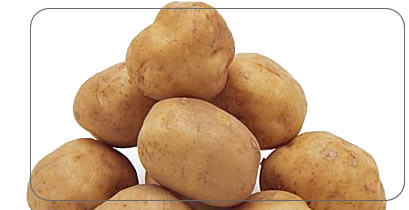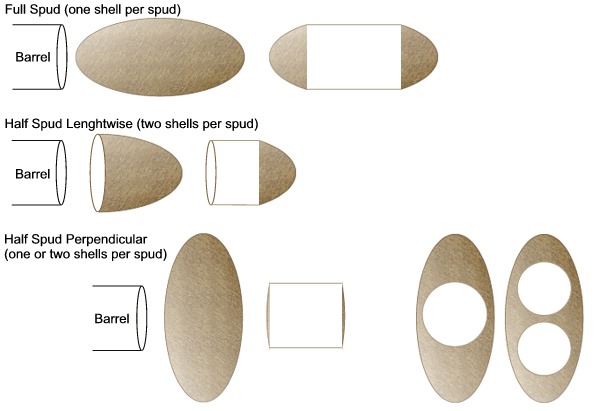Potato
The potato (aka spud) is the original and most common ammo for a spud cannon. This is largely because of their low cost and wide availability. A spud cutter is used to cut the potato to the size of the barrel, giving a basically air tight fit. In extreme cases the spud will split or be crushed as it is loaded. (A solution to this problem is offered here.)
Selection, cutting and use
Typically large and juicy spuds are preferred. The size should be greater than the barrel diameter and the juice acts as a lubricant in the barrel when loaded. Usually the spud is cut to the proper size for the barrel by a spud cutter, a knife edge sanded into the end of the barrel.
There are several ways to cut the spuds and the resulting shells are generally called either "full-spuds" of "half-spuds". Full-spuds will seal a bit better and are about twice as heavy as half-spuds. Of course, you get twice as many shots using half-spuds and the muzzle velocity is about twice as fast with a half-spud.
Target performance
Upon impact with:
- A twig, a potato typically survives.
- A water-filled milk jug, a potato is reduced to "potato crumbs"; small bits of potato only a few mm in size.
- A tree, a potato is reduced to "potato crumbs".
- A rock, a potato is reduced to "potato crumbs".
specifications
- Density: varies, although it is typically around 1.1 g/ml (16g or 0.58oz per cubic inch)

